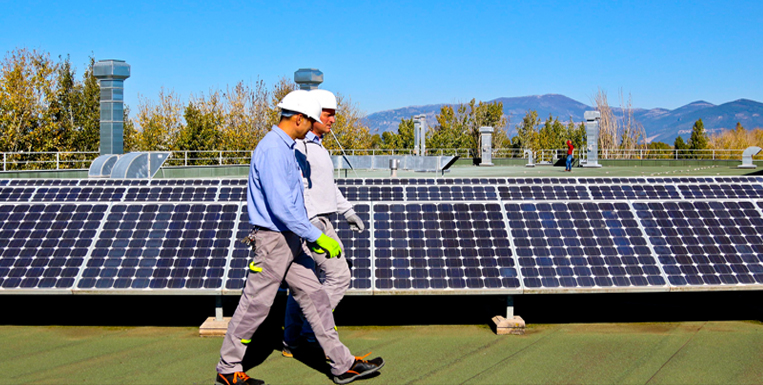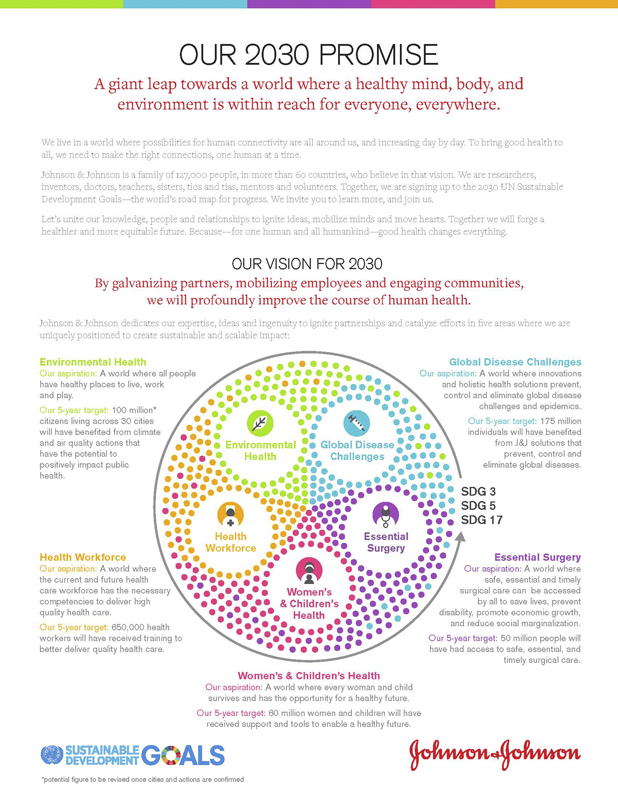Earth Day 2017
April 22, 2017 will mark the 47th annual celebration of Earth Day. To recognize Earth Day 2017, we sat down with Philip Dahlin, Global Director, Sustainability, at Janssen to learn more about the efforts of Janssen and Johnson & Johnson to reach our aspiration of a world where all people have healthy places to live, work and play.
Q: As a leading pharmaceutical company, why should Janssen care about the environment?
A: We need to take care of the planet like our health depends on it – because it does. The degradation of our environment – including air and water pollution, declining health of ecosystems, and chemical exposures – represents one of the major threats to human health. At the same time, climate change is increasing the risk of severe weather and food insecurity and altering infectious disease patterns. And, because the rising global population is further stressing the environment, it’s likely we’ll see even more impacts on human health.
Q: We all know that polluted air is bad, but don’t most of us live in reasonably clean environments?
A: When people hear “air pollution” they tend to immediately think of images of China and India during air pollution alert events where the air is practically tangible. But, unfortunately, we are discovering that air pollution is a more widespread problem than most people realize and has a greater health burden than first estimated. The statistics below represent just a tiny fraction of the ongoing and increasing health risks of continued damage to our environment:
- Globally, about seven million deaths – one in eight– are linked to air pollution. Of those deaths, 600,000 are children under age 5.1
- More than 80 percent of cities do not meet WHO guidelines for safe air.2
- 300 million children, primarily in South Asia, breathe highly toxic air, per UNICEF in the New York Times 3
And, while the staggering cost in human lives is paramount, the financial impacts must also be considered. For example, in a memo supporting the Clean Power Plan, the U. S. Environmental Protection Agency estimated that for every $1 spent on renewable energy, $4 to $7 in healthcare costs are avoided. So, from that perspective, investments in clean, renewable energy technologies and energy efficiency can provide significant returns in terms of improved public health and reduced healthcare costs.

Solar panels at Janssen’s Latina, Italy, campus.
Q: Wow, the link between environmental and human health is certainly clear. How are you enlisting other experts to raise awareness and advocate for change?
A: One of the most exciting things we’ve done lately is to partner with C40, a network of mayors from the world’s megacities who are committed to addressing climate change. We’re working to connect the dots among climate action, better air quality in cities, and measurably better health among citizens. Specifically, we’re engaging with 30 cities for a two-year study to identify best practices and at least 30 climate action items that will improve human health. We’ll apply the lessons learned to motivate action and drive change globally.
Q: It’s great to see Johnson & Johnson getting involved on such a broad scale. Johnson & Johnson also announced its commitment to the United Nations Sustainable Development Goals (SDGs). Tell us more about that.
A: We see the SDGs as the world’s road map for progress. Adopted by United Nation Member States in September 2015, the 17 SDGs and their respective targets reflect a global vision to reduce poverty, foster greater prosperity, and protect the environment over the next 15 years.
We’re passionate about dedicating our expertise, ideas and ingenuity to ignite partnerships, catalyze efforts, and work to profoundly improve the course of human health in five areas where we are uniquely positioned to create sustainable and scalable impact: Global Disease Challenges, Essential Surgery, Women & Children’s Health, Health Workforce, and Environmental Health. Our environmental health aspiration is that we will help to develop a world where all people have healthy places to live, work and play.

Q: That’s a mighty big leap! What will Johnson & Johnson be doing to fulfill your environmental health aspiration?
A: In 2016, we set a five-year target to ensure that 100 million citizens living across 30 cities will have benefited from climate and air quality actions that have the potential to positively impact public health, based on our collaboration with C40.
Beyond that work, we will be convening other global partnerships to drive awareness and change. This work is reinforced by our own commitment, already in place, to produce and/or procure 35 percent of our electricity from renewable sources, reduce our absolute carbon emissions by 20 percent by 2020 and move to 100 percent renewable energy by 2050. In addition to our operational environmental footprint, we continue to reduce the footprint associated with our products as well. Our focus on increasing the recyclability of our consumer product packaging to more than 90 percent in key markets will be a significant factor in meeting our goals. And, we are also striving to ensure that new and existing products representing 20 percent of our revenue achieve our EARTHWARDS® recognition for sustainable innovation improvements.
I’m so proud that Janssen and Johnson & Johnson can help people around the world be healthier by taking action to make the planet healthier. We can’t do it alone but luckily we are finding partners, change advocates and fellow visionaries to help us—unlocking change at the rate and scale we need to make a real difference for more people, in more places.
Visit the Sustainability section here on janssen.com to learn more about our environmental work and commitment.



